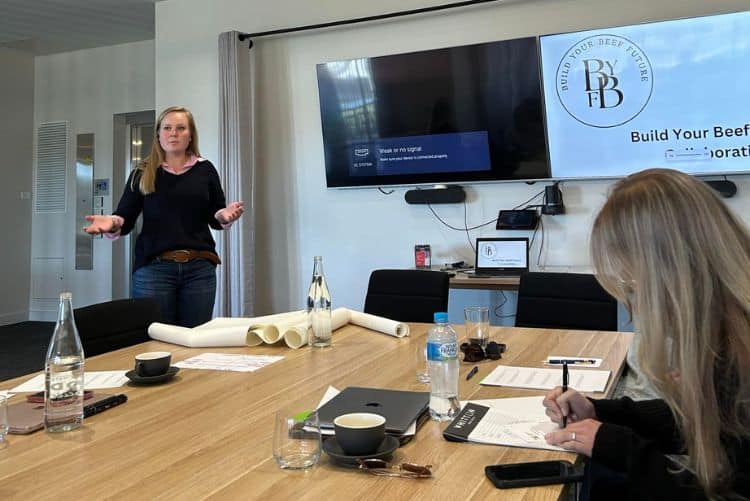Have you ever been transported to another place or time? Or sat on the edge of your seat when listening to a person speak? Have you ever felt emotional when listening to a keynote address or felt compelled to share information you have heard with others after a presentation? If so, this means you have been lucky enough to be in the presence of a confident, engaging and creative speaker. Someone who spoke from their heart, cared to share meaningful stories and messages and did so with interest in you and those around you. Now, it’s your turn. You have been asked to speak! Here are my 8 ways to speak confidently and creatively while being as engaging as you can.
1. Know the Why
Find out why you have been asked to speak. Why have you been approached and not others? What are they wanting the people in the audience to hear and feel? Once you know this find the key purpose for your presentation. What’s your goal and what content should you include. Kind of like a what’s in and what’s out content list.
2. Key Messages
A key message is an important point that you want to share. Your key message/s should be relevant to your audience and be instantly relatable to them. Write up your key messages and become very clear about them. For example, if your presentation is about Time Management then key messages could be like;
- Set goals that are achievable and measurable
- Set a time limit to complete a task
- Prioritise task from most to least important
- Complete one task at a time – don’t multi-task
Keep them short, clear and concise – no waffle.
3. Use Stories and Examples that are Easy for Your Audience to Understand
Using stories and examples will help to creatively connect with your audience. They will relate to the stories and examples you share and it’s likely this will evoke emotion in them so they deeply connect with the story. This means they are engaging with the content and learnings you are sharing. You can use case studies, personal stories and anecdotes or even a news story or storyline from a movie etc. They will be all ears and will listen deeply to what you have to say. Stories can also help to explain and help listeners understand complex or abstract concepts.
4. Vary your Pace and Tone
No one likes to listen to someone speaking in monotone for very long. Changing the volume, pace and tone when you speak adds interest. It’s like you are singing as your listeners get drawn in to what you are talking about as well as how you are speaking. Changing pace helps to build some suspense (slower) or excitement (faster) and varying your tone will add interest and at times you will see people leaning and almost stretching towards you to hear what you are going to say next. Practise pace and tone when you are getting ready for your presentation as it really will add spice.
5. Use Visual Aids of Props
You will place a lot of pressure on yourself if you expect to deliver key messages by speaking only. Identify some visual aids like photos, diagrams, models or graphs. Or even a prop – something that you have with you and refer to during your presentation. I like to use visualisation as part of my presentations. I usually say – take a minute, I want you to picture this. I want you to picture a white clock on the wall, its ticking loudly and the big hand has just moved from being on the hour to 15 mins past. It’s time to stop your 15 mins work time and celebrate the tasks you have completed. Now sit with how you feel. I expect every single person in your audience will feel pride and happiness right at this time. You could also do this task with a clock with its alarm sounding.
6. Engage Who is Listening Individually / Engage your Audience as a Whole
Engagement is critical to ensuring you speak well and with confidence. Build in ways for your audience to participate at the beginning the middle and towards the end of your speech. This could be as simple as asking them to raise their hands if they have heard of the Pomodoro time management tool. Or, if they have ever been to time management training before or if they consciously use time management tools in their work. You can also use online apps such as Slido You can conduct polls, quizzes, Q+As and create word clouds etc right in front of your audience.
7. Practise Practise and Practise Some More and then Revise
Work on your presentation. Write it up. Identify the key messages you want to share. Work on the stories and information you want to share. Identify visuals, props or Apps you want to use. Work up the moments of engagement and then run through your presentation and get feedback. Revise and then practise some more. Becoming familiar with your presentation will support you to present it with confidence and ease.
8. Speak Kindly
Self talk is important. It’s quite common for that little voice inside your head to speak loudly just before you are about to give a presentation. It’s there to remind you to take care, get your presentation in order and do your best. Thank that voice for showing up. Tell it you have planned and are prepared for an engaging, creative and confident presentation. Speak positively to yourself by saying things like;
- I’m fully prepared
- I have this in the bag
- I know my key messages and can share them clearly
- I am confident
- I am strong and ready for this presentation
- I have been working towards today
- I’m ready!
Over to You
Planning is important. Take time and give energy to plan an engaging presentation. Remember to build in time to gain feedback to your key messages and practise practise and then practise some more. And finally change your pace and tone when you speak and your audience will engage more fully with you. Good luck. And please feel free to reach out to me here if you think I can help in any way.
Until next time!



